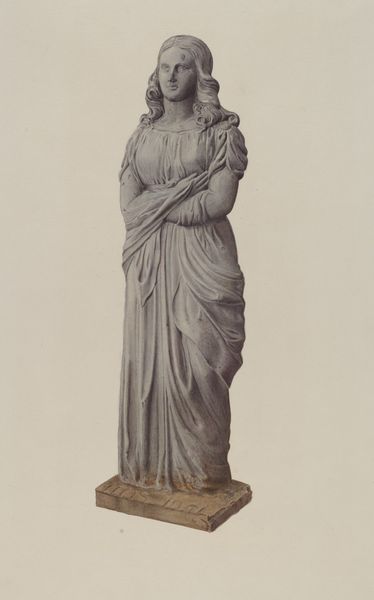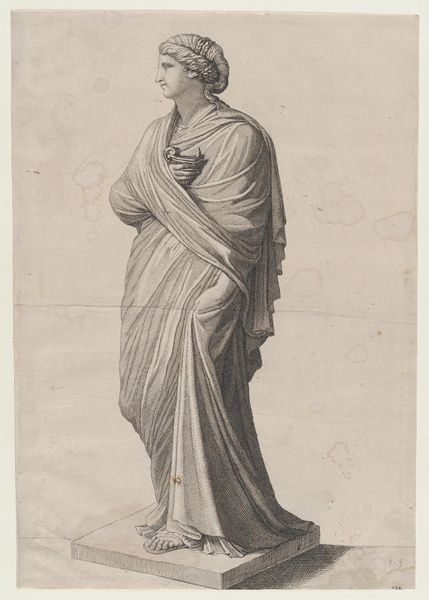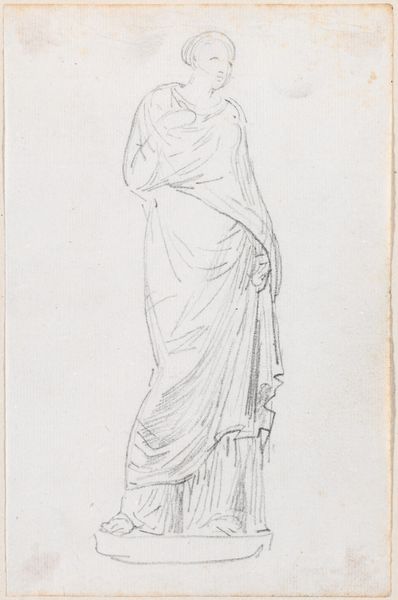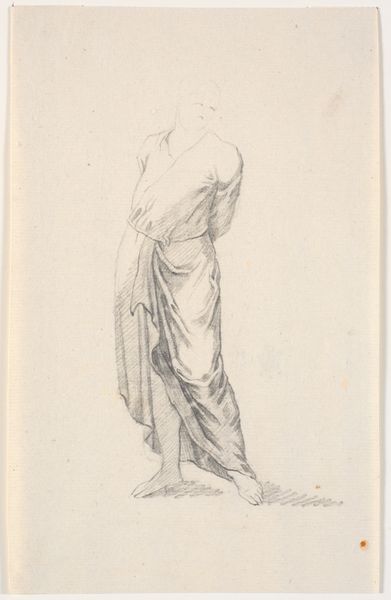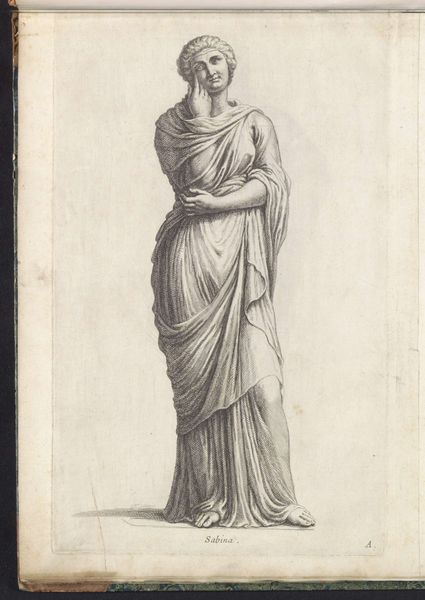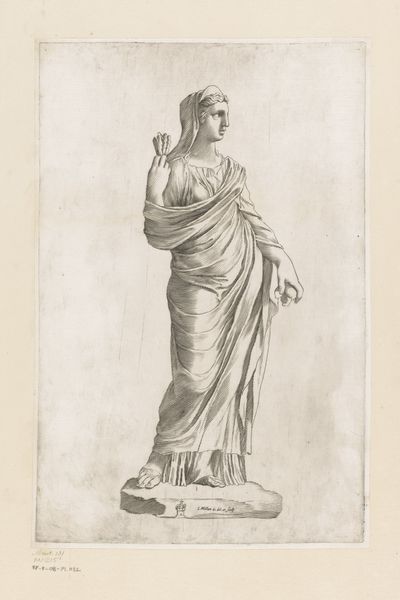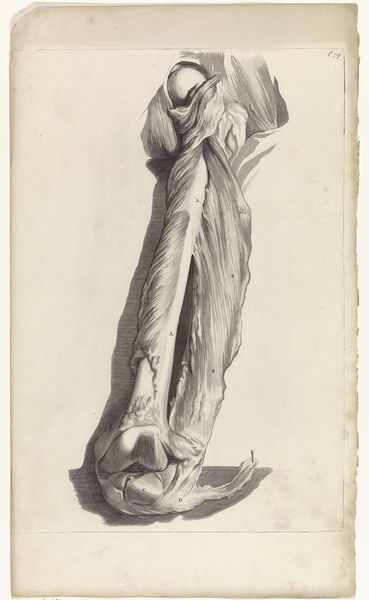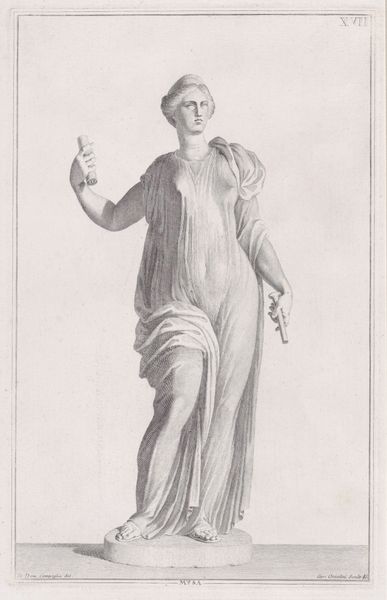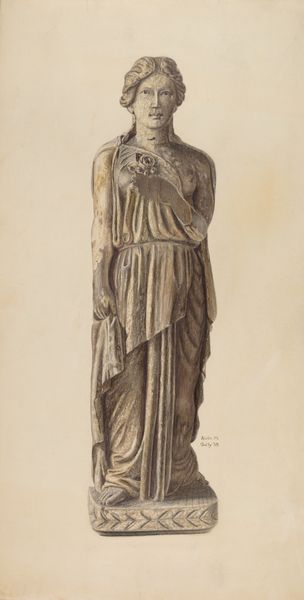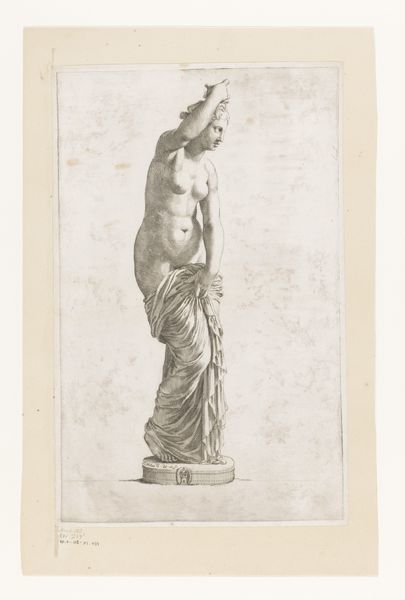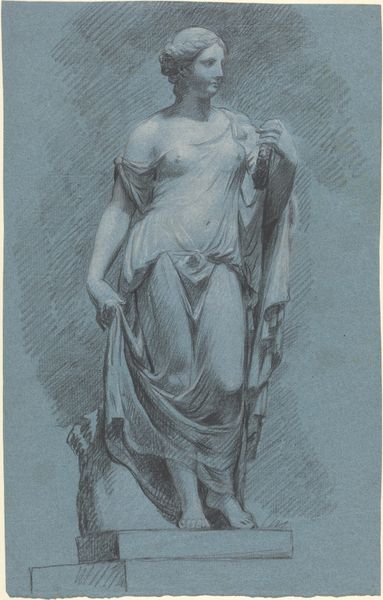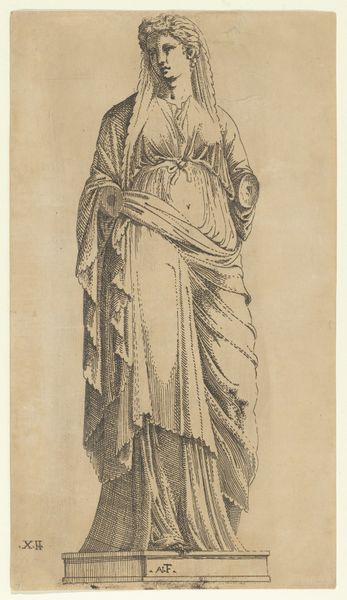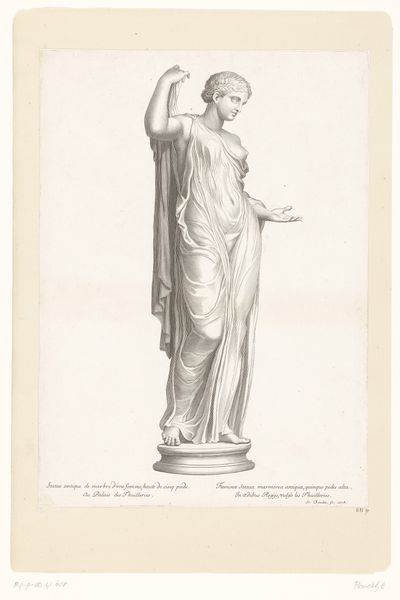
drawing, graphite
#
drawing
#
classical-realism
#
figuration
#
graphite
#
history-painting
#
graphite
Dimensions: overall: 56.5 x 38.3 cm (22 1/4 x 15 1/16 in.)
Copyright: National Gallery of Art: CC0 1.0
Curator: Looking at this graphite drawing, titled "\"Galatea\" Figurehead," created around 1940 by Mary E. Humes, I'm immediately struck by the upward gaze of the figure, she looks skyward as though expecting… inspiration? Editor: It certainly grabs your attention, doesn't it? The upward thrust of the figure is echoed by the vertical composition, lending a monumental feel to what is, in fact, a medium-sized drawing on paper. Graphite on paper; there's something so ancient about that combination, isn't there? A direct line back to the Renaissance. Curator: Totally! There is a stillness about her, I'd say "vulnerability", yet the treatment is oddly solid; very classical. Is she rising, dreaming, praying? Galatea, the mythological sea nymph—perhaps longing to be human, or elevated even to godly status. She reminds me of old marble statues in garden fountains. The cool shade, a kind of hushed expectancy of what’s beyond our grasp… It makes you think! Editor: Precisely. Humes has masterfully used the tonal gradations of graphite to suggest both the rounded volume of classical sculpture and the softness of human flesh. Notice the precise detailing around the face and the subtle shadows defining the drapery; there’s an intentional contrast at play between surface and depth. I notice in her form how realism and a classic idealized type get somewhat muddied... She represents more than any specific subject, it makes me think. Curator: Maybe that slight ambiguity *is* the point? We know how mid-century art had its collective fascinations with mythology—a lens for history. Is Galatea literally a figurehead, leading, facing ahead to what is yet to be. Or, do you think that this interpretation runs aground? Editor: Perhaps. The figurehead, traditionally an emblem of maritime prowess, is here presented in a rather static pose, contained by the rectangular pedestal and, ultimately, by the frame itself. It seems more about internal experience than external dominion to me. Curator: And she makes me question my expectations of sculpture or figures. So, I'm all in on what's internal. That fits much more with Galatea yearning for what she cannot have: mortality or to rise higher. Editor: An interesting thing to ponder. This close attention to form allows one to access deep meaning indeed. Curator: The dialogue opens right up... Well, whatever its final interpretation, I like the idea that something rendered so traditionally on its surface, opens right up to different ways of viewing our humanity, in a drawing.
Comments
No comments
Be the first to comment and join the conversation on the ultimate creative platform.
